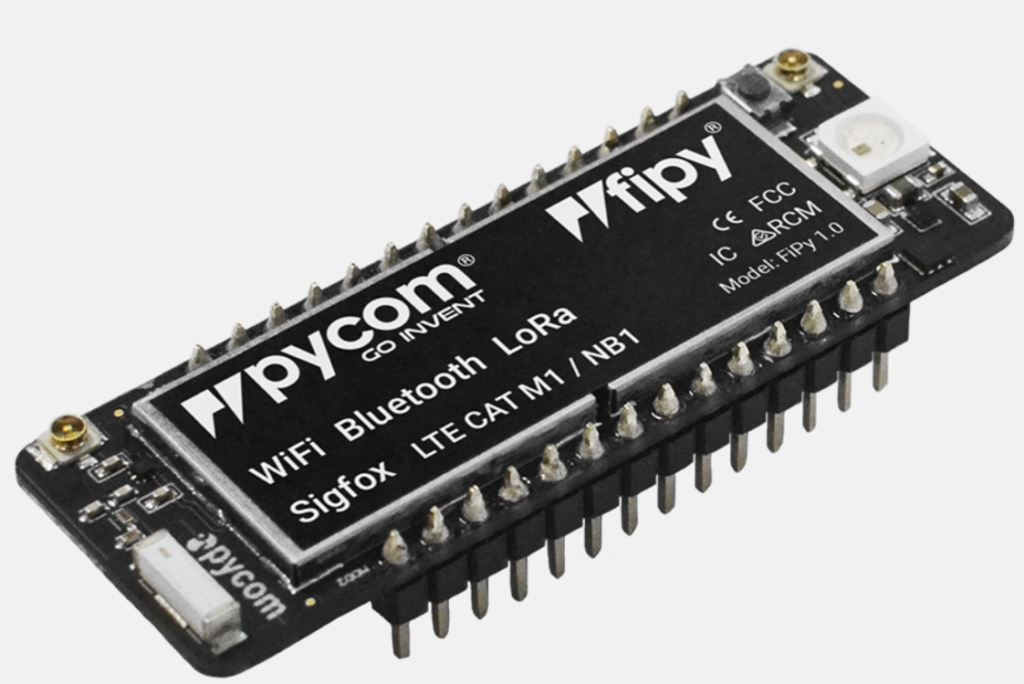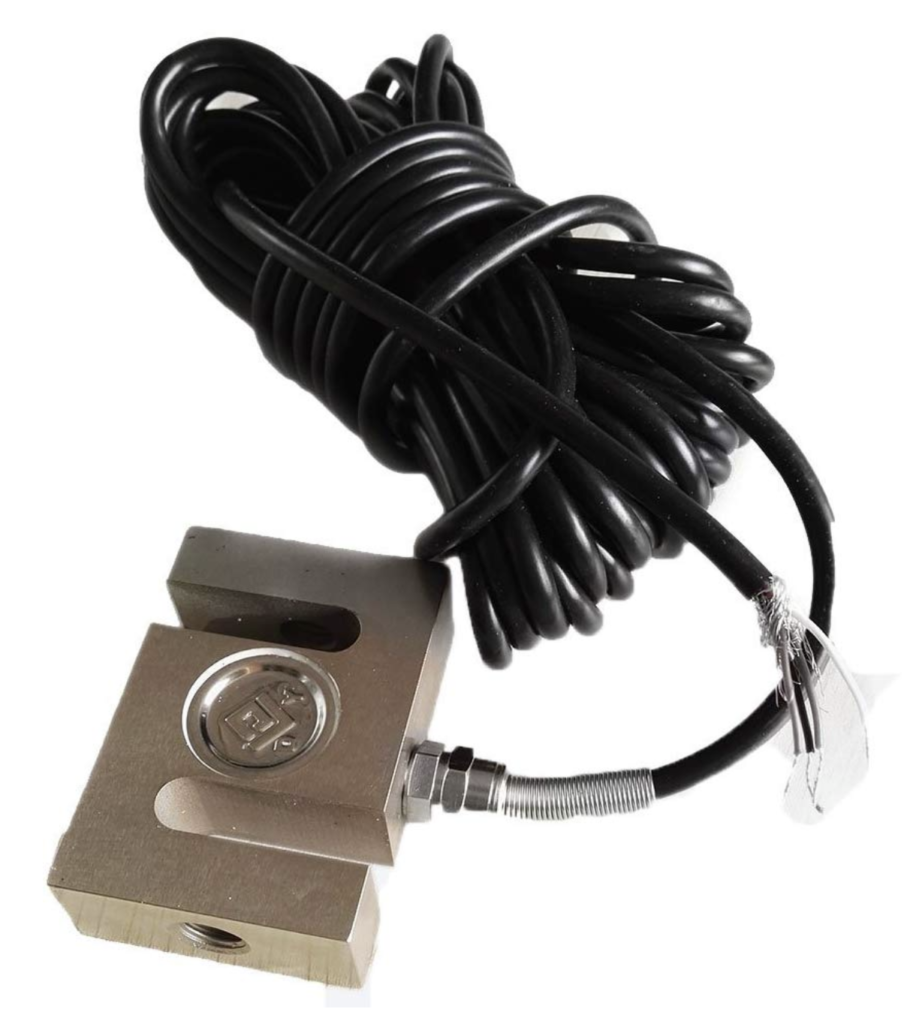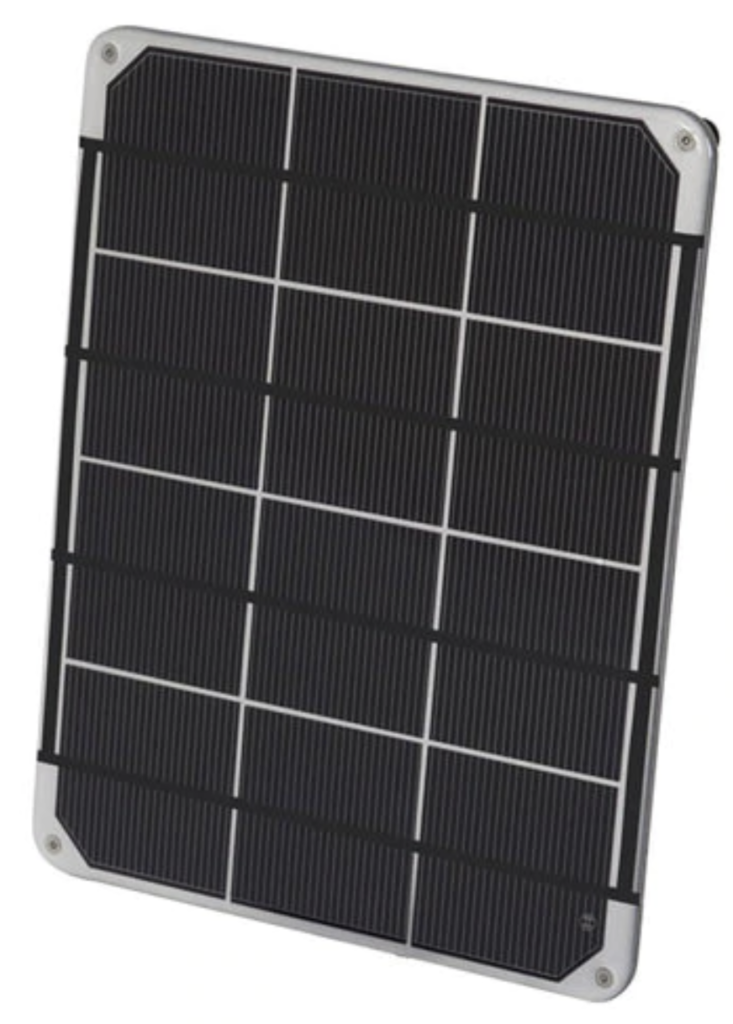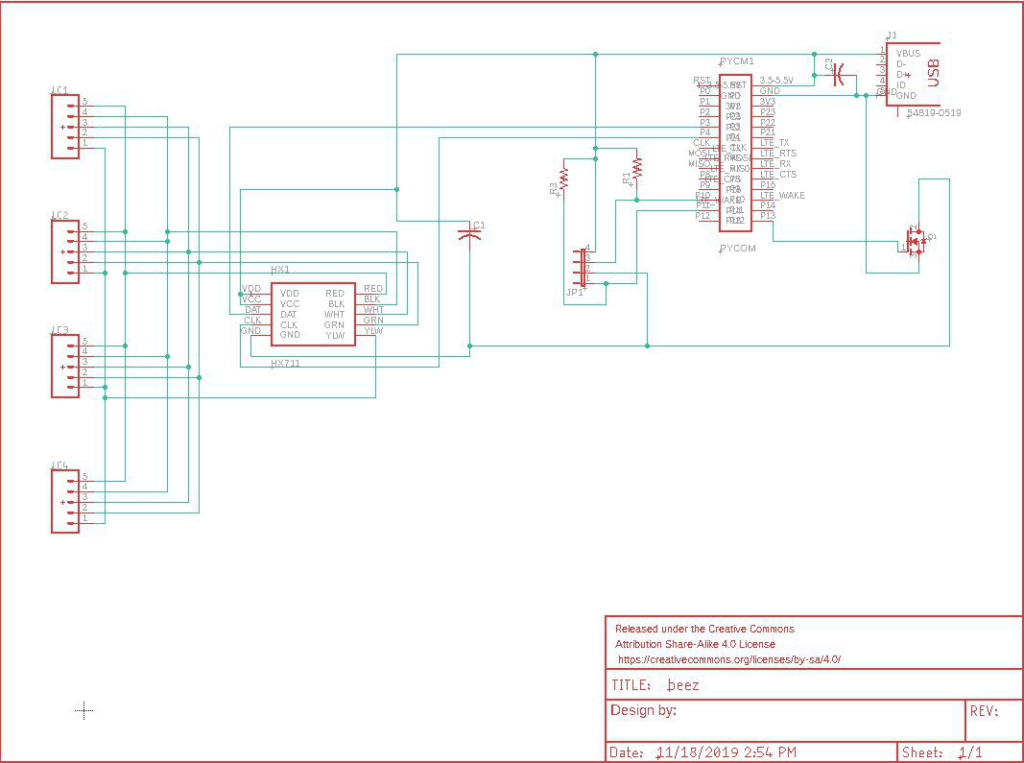The embedded system to be used is a set of sensors primarily driven by a FiPy, made by Pycom. The FiPy is a micro-python based micro-controller that has various embedded capabilities such as i2c, SPI, UART, ADCs, DACs, etc. It sits in the frame of an ESP32 board with various attachments that grant it the ability to use WiFi, Bluetooth, LoRa, Sigfox, LTE CAT-M1, and NBIOT. Five different signal types, hence the name “FiPy”. The datasheet for the FiPy can be found here.


The sensors to be used in this project are a temperature & humidity sensor and 4 load cells. Specifically, the AM2320 is used for finding our temperature and humidity values. This sensor is a i2c based sensor that is affordable yet accurate. The project is utilizing four S-type load cells that will retrieve the weight placed on the scale. The datasheet for the AM2320 can be found here, and the link to the load cells, here.


Lastly, some peripherals are needed to handle gathering the signals of these sensors. The FiPy directly interfaces with the AM2320 of i2c, so nothing is needed there, however, the signals from the load cells must be amplified for processing. To do this, an HX711 24-bit amplifier and ADC was used. The datasheet for the HX711 can be found here.

In order to keep the sensors from draining power while the FiPy enters deep sleep mode. A simple NMOSFET transistor is used to enable the sensors while the device is awake and disable them when it goes to sleep.
Lastly, the device needs to be powered. The group is completing this task by using a voltaic V50 battery pack accompanied by a 6 Watt solar panel. This combination is favorable as the battery can be charged while simultaneously powering the micro-controller.


With all the parts selected, a PCB was designed to house all the components in a favorable manor. The PCB was designed in EAGLE.


